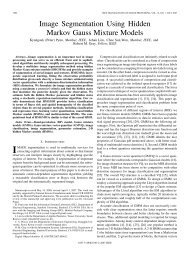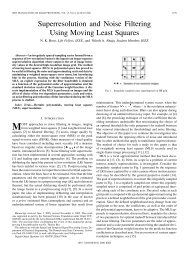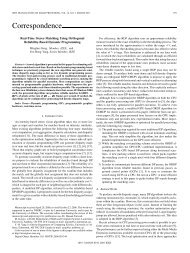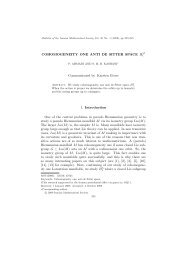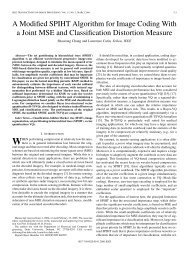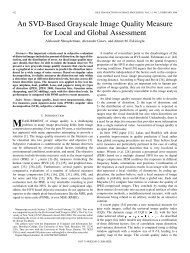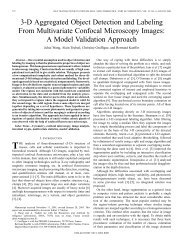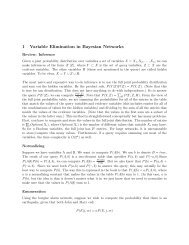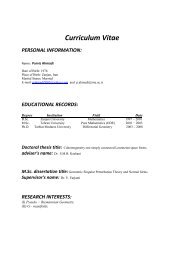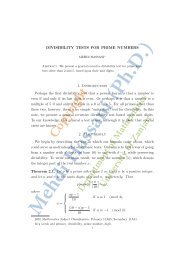Optimization of phase-only computer-generated holograms using
Optimization of phase-only computer-generated holograms using
Optimization of phase-only computer-generated holograms using
Create successful ePaper yourself
Turn your PDF publications into a flip-book with our unique Google optimized e-Paper software.
1.0 -<br />
0.5<br />
0<br />
0<br />
Amp ii tude<br />
(a) (b)<br />
Fig. 2 Transmittance functions <strong>of</strong> a binary amplitude<br />
gray grating (c).<br />
1260 / OPTICAL ENGINEERING / June 1992 / Vol. 31 No. 6<br />
x<br />
BOLSTAD, YATAGAI, and SEKI<br />
0.5<br />
Phase Phase<br />
3 Diffraction Efficiency <strong>of</strong> Ideal Phase-Only<br />
Holograms<br />
The diffraction efficiencies <strong>of</strong> gray and binary gratings were<br />
14<br />
originally described by Brown and<br />
First we<br />
will describe these and then the diffraction efficiencies <strong>of</strong><br />
their <strong>phase</strong>-<strong>only</strong> counterparts. For simplicity, consider the<br />
diffraction efficiency difference between a binary grating<br />
and its <strong>phase</strong> version, as shown in Fig. 2. The transmittance<br />
function <strong>of</strong> a binary grating with a period <strong>of</strong> L\v is given<br />
0<br />
Amp] itude Amp] itude<br />
grating (a), its <strong>phase</strong> version (b), and a bleached<br />
0<br />
4.)<br />
>.,<br />
u<br />
C<br />
a)<br />
a<br />
4-<br />
4w<br />
1.e<br />
0.5<br />
0<br />
x x<br />
Phase<br />
x x x<br />
by 0<br />
211'<br />
Phase Difference<br />
_1 m1 . Tb (2irnx<br />
2 7T'fl Lv ) ' (1) Fig. 3 Theoretical plot <strong>of</strong> diffraction efficiency ratio R and R' versus<br />
<strong>phase</strong> difference 0.<br />
where m denotes the modulation level <strong>of</strong> the grating and<br />
O



